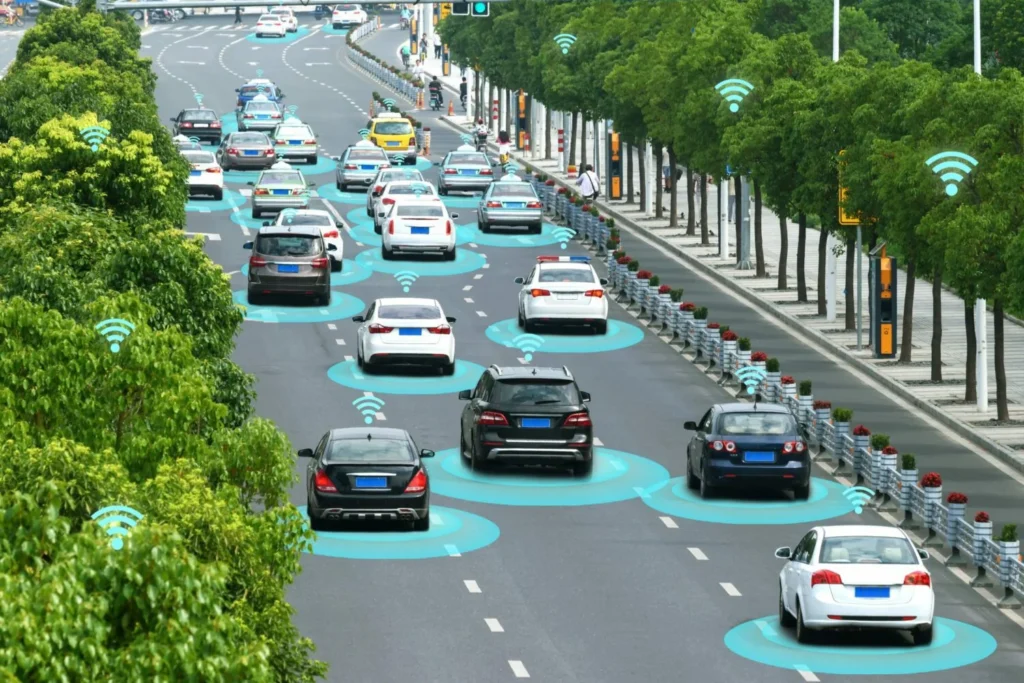Autonomous Driving Technology: A New Era In Urban Transportation is revolutionizing the way people and goods are transported in cities. This innovative technology has the potential to significantly improve road safety, reduce traffic congestion, and provide more efficient and convenient transportation options for urban dwellers. With the advancement of autonomous driving technology, vehicles are equipped with sensors, cameras, and artificial intelligence to navigate roads and make driving decisions without human intervention. As a result, the concept of autonomous driving is reshaping the future of urban transportation and paving the way for a new era of mobility.
One of the most intriguing aspects of Autonomous Driving Technology: A New Era In Urban Transportation is its potential to enhance accessibility for individuals with limited mobility. This technology has the capability to provide a new level of independence and freedom for people who may have difficulty driving or using traditional transportation options. Additionally, the integration of autonomous vehicles into urban transportation systems has the potential to reduce the environmental impact of traditional transportation methods, as these vehicles can be designed to be more fuel-efficient and produce fewer emissions. Furthermore, the economic implications of autonomous driving technology are also significant, as it has the potential to create new business models and job opportunities in the transportation industry.
1. What is Autonomous Driving Technology?
Autonomous driving technology, also known as self-driving or driverless technology, refers to vehicles that are capable of navigating and operating without human input. These vehicles use a combination of advanced sensors, cameras, radar, and artificial intelligence to perceive their surroundings, make decisions, and navigate roads safely. Autonomous driving technology has the potential to revolutionize the transportation industry by improving road safety, reducing traffic congestion, and providing mobility options for individuals who are unable to drive themselves.
There are different levels of autonomy in self-driving vehicles, ranging from level 1 where the driver still has full control, to level 5 where the vehicle is fully autonomous and can operate in all conditions without any human intervention. Companies like Tesla, Google’s Waymo, and traditional automakers are investing heavily in autonomous driving technology to bring this innovation to the mainstream.
2. The Advantages of Autonomous Driving Technology
Autonomous driving technology offers several potential advantages, including improved road safety, reduced traffic congestion, and increased mobility for individuals who are unable to drive. By eliminating human error, which is a leading cause of accidents, self-driving vehicles have the potential to significantly reduce the number of traffic-related injuries and fatalities. Additionally, autonomous vehicles can optimize traffic flow and reduce congestion by communicating with each other and making more efficient use of road space. This can lead to shorter commute times and a more seamless transportation experience for everyone.
Furthermore, autonomous driving technology has the potential to provide mobility options for individuals who are unable to drive due to age, disability, or other factors. By offering a safe and reliable transportation alternative, self-driving vehicles can improve access to essential services and reduce social isolation for these individuals.
3. The Challenges of Autonomous Driving Technology
While there are many potential benefits of autonomous driving technology, there are also several challenges that need to be addressed. One of the primary concerns is the safety and reliability of self-driving vehicles, as they must be able to navigate complex and unpredictable real-world scenarios. Ensuring that autonomous vehicles can operate safely in all conditions, including inclement weather and unexpected road obstacles, is a significant technical challenge that requires rigorous testing and validation.
Additionally, there are legal and regulatory challenges surrounding autonomous driving technology, including questions about liability in the event of accidents and the need for updated traffic laws and infrastructure. Privacy and cybersecurity are also important considerations, as self-driving vehicles rely on extensive data collection and connectivity, raising concerns about the potential for hacking and unauthorized access to personal information.
4. The Impact of Autonomous Driving Technology on Urban Transportation
Autonomous driving technology has the potential to significantly impact urban transportation systems, including public transit, ride-sharing services, and personal vehicle ownership. Self-driving vehicles could enhance the efficiency and accessibility of public transit by providing first-mile and last-mile solutions, as well as on-demand services for individuals with limited mobility. This could lead to a more seamless and integrated transportation network that reduces the need for private car ownership in urban areas.
Ride-sharing services, such as Uber and Lyft, are also likely to be transformed by autonomous driving technology, as it could reduce the cost of providing rides and increase the availability of on-demand transportation options. Additionally, the concept of car ownership itself may change, as individuals may choose to rely on autonomous vehicle fleets for their transportation needs rather than owning a personal vehicle. This shift could lead to reduced parking demand, less traffic congestion, and a more sustainable use of urban space.
5. The Ethical Considerations of Autonomous Driving Technology
As autonomous driving technology continues to develop, there are important ethical considerations that need to be addressed. One of the key ethical dilemmas is how self-driving vehicles should prioritize the safety of different road users in the event of an unavoidable accident. For example, should an autonomous vehicle prioritize the safety of its occupants, pedestrians, or other vehicles in a potential collision scenario? Resolving these ethical dilemmas requires careful consideration and input from various stakeholders, including policymakers, ethicists, and the general public.
Additionally, there are ethical considerations related to the potential impact of autonomous driving technology on employment, particularly for individuals who work in the transportation industry. As self-driving vehicles become more prevalent, there may be job displacement in sectors such as trucking and taxi services, which raises important questions about the ethical responsibility to support affected workers and communities during this transition.
6. The Future of Autonomous Driving Technology
The future of autonomous driving technology holds great promise for transforming urban transportation and mobility. As the technology continues to advance, we can expect to see a greater integration of self-driving vehicles into existing transportation systems, including public transit, ride-sharing, and delivery services. This could lead to more efficient and sustainable urban mobility solutions that reduce congestion, enhance safety, and improve accessibility for all individuals.
Furthermore, the continued development of autonomous driving technology is likely to lead to new business models and economic opportunities, as companies explore innovative ways to provide transportation services and leverage the benefits of self-driving vehicles. This could include new forms of on-demand mobility, delivery services, and last-mile transportation solutions that enhance the overall urban transportation experience.
7. The Role of Regulation and Policy in Shaping Autonomous Driving Technology
Regulation and policy play a crucial role in shaping the development and deployment of autonomous driving technology. Governments and regulatory bodies are responsible for establishing safety standards, licensing requirements, and operational guidelines for self-driving vehicles to ensure their safe integration into existing transportation systems. Additionally, policymakers need to address legal and ethical considerations, such as liability, data privacy, and cybersecurity, to create a supportive regulatory framework for autonomous driving technology.
Furthermore, collaboration between industry stakeholders, policymakers, and the public is essential to address the complex challenges and opportunities associated with autonomous driving technology. By fostering open dialogue and cooperation, it is possible to develop regulations and policies that support innovation while prioritizing safety, accessibility, and ethical considerations in the deployment of self-driving vehicles.
8. The Public Perception and Acceptance of Autonomous Driving Technology
Public perception and acceptance of autonomous driving technology play a significant role in its widespread adoption and integration into urban transportation systems. Building trust and confidence in self-driving vehicles requires transparent communication about the technology’s capabilities, safety features, and potential benefits. Additionally, public education and awareness campaigns can help individuals understand the impact of autonomous driving technology on road safety, mobility, and urban development.
Furthermore, engaging with the public and gathering feedback on their concerns and preferences regarding autonomous driving technology is essential for creating user-centered transportation solutions. By addressing public perceptions and integrating user feedback into the development and deployment of self-driving vehicles, it is possible to build a more supportive and inclusive urban transportation ecosystem that reflects the needs and values of the communities it serves.



